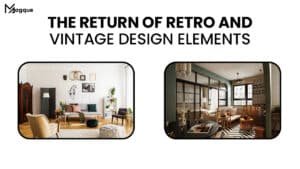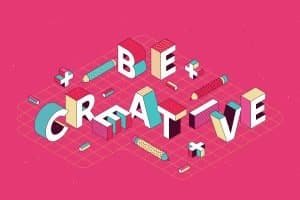Are you ready to give your website a fresh new look that’s eye-catching and keeps up with the latest trends in web design? Whether you’re a seasoned web designer or just dipping your toes into the digital world, staying updated on the newest trends is crucial to ensure your website stands out from the crowd and delivers an exceptional user experience. Now, let’s dive into some of the hottest trends shaping the web design landscape.
1. Minimalism with Bold Typography
Gone are the days of cluttered web pages and overwhelming visuals. The minimalism trend continues to dominate the web design scene, with clean layouts and ample white space taking center stage. Pairing minimalistic designs with bold typography is a winning combination that instantly grabs attention and conveys your message. Think big, eye-catching fonts that serve as focal points on your page, effortlessly guiding visitors through your content.
2. Dark Mode
Dark mode isn’t just a fad – it’s here to stay. With more devices and platforms offering dark mode options, web designers are embracing this sleek and modern aesthetic. Not only does dark mode reduce eye strain, especially in low-light environments, but it also adds a touch of sophistication to your website’s design. Experiment with dark color schemes, contrasting elements, and pops of color to create visually stunning experiences for your users.
3. Immersive Multimedia Experiences
In today’s fast-paced digital world, capturing and maintaining users’ attention is more challenging than ever. That’s where immersive multimedia experiences come into play. From captivating video backgrounds to interactive animations and 3D graphics, incorporating multimedia elements into your website can enhance engagement and leave a lasting impression on visitors. Just remember to strike the right balance between creativity and usability to ensure a seamless browsing experience.
4. Responsive Design
With the ever-increasing variety of devices used to access the internet, responsive design is no longer optional—it’s essential. In today’s mobile-first world, ensuring your website looks and functions flawlessly across desktops, laptops, tablets, and smartphones is paramount. Embrace fluid layouts, flexible grids, and scalable images to create a responsive design that adapts to any screen size or orientation, providing users with a consistent experience no matter how they access your site.
5. Sustainability and Eco-Friendly Design
As awareness of environmental issues continues to grow, so does the importance of sustainability in web design. Incorporating eco-friendly practices, such as optimizing website performance to reduce energy consumption and using renewable resources for hosting, can help minimize your website’s carbon footprint. Additionally, highlighting your commitment to sustainability through design elements like eco-friendly color palettes and recyclable graphics can resonate with environmentally conscious users.
Conclusion
The world of web design is constantly evolving, with new trends and technologies emerging rapidly. By staying informed and embracing the latest trends, you can create websites that look stunning and deliver exceptional user experiences. Whether you’re drawn to minimalist designs, immersive multimedia experiences, or eco-friendly practices, there’s never been a better time to elevate your web design game and leave a lasting impression on your audience. So why wait? Dive into the latest trends in web design today and watch your website soar to new heights of success. And be sure to explore Magque, your go-to source for the latest and most intriguing updates in the realms of informative tips & reviews!
FAQs
1. What is the significance of minimalism in web design trends?
Minimalism in web design focuses on simplifying layouts and reducing clutter to create a clean and visually appealing interface. This trend is significant because it improves user experience by making it easier for visitors to quickly navigate content and find what they’re looking for. Additionally, minimalistic designs load faster and perform better on various devices, contributing to overall website usability and effectiveness.
2. How does dark mode impact web design trends?
Dark mode has gained popularity in recent years due to its sleek and modern aesthetic and practical benefits, such as reduced eye strain in low-light environments. In web design, incorporating dark mode elements adds versatility and sophistication to a website’s visual appeal. It also provides users an alternative viewing option that aligns with their preferences, enhancing overall user experience and engagement.
3. What role do immersive multimedia experiences play in modern web design?
Immersive multimedia experiences, including video backgrounds, interactive animations, and 3D graphics, have become integral to modern web design trends. These elements captivate users’ attention and create memorable interactions that differentiate websites from competitors. By incorporating multimedia, web designers can engage visitors deeper, increase time spent on the site, and ultimately drive conversions and brand loyalty.
4. Why is responsive design essential in today’s web design landscape?
Responsive design ensures that websites adapt seamlessly to various screen sizes and devices, providing users with a consistent and optimal viewing experience. With the proliferation of mobile devices, responsive design has become essential for reaching and engaging audiences across multiple platforms. By prioritizing responsiveness, web designers can improve accessibility, increase user satisfaction, and enhance SEO performance, ultimately driving traffic and conversions.
5. How does sustainability factor into modern web design trends?
Sustainability in web design involves implementing eco-friendly practices to reduce environmental impact and promote social responsibility. This includes optimizing website performance to minimize energy consumption, using renewable resources for hosting and employing eco-friendly design elements. By embracing sustainability, web designers can appeal to environmentally conscious users, differentiate their brands, and contribute to positive change in the digital landscape.
Read Also This:- Trends in Responsive Web Design













